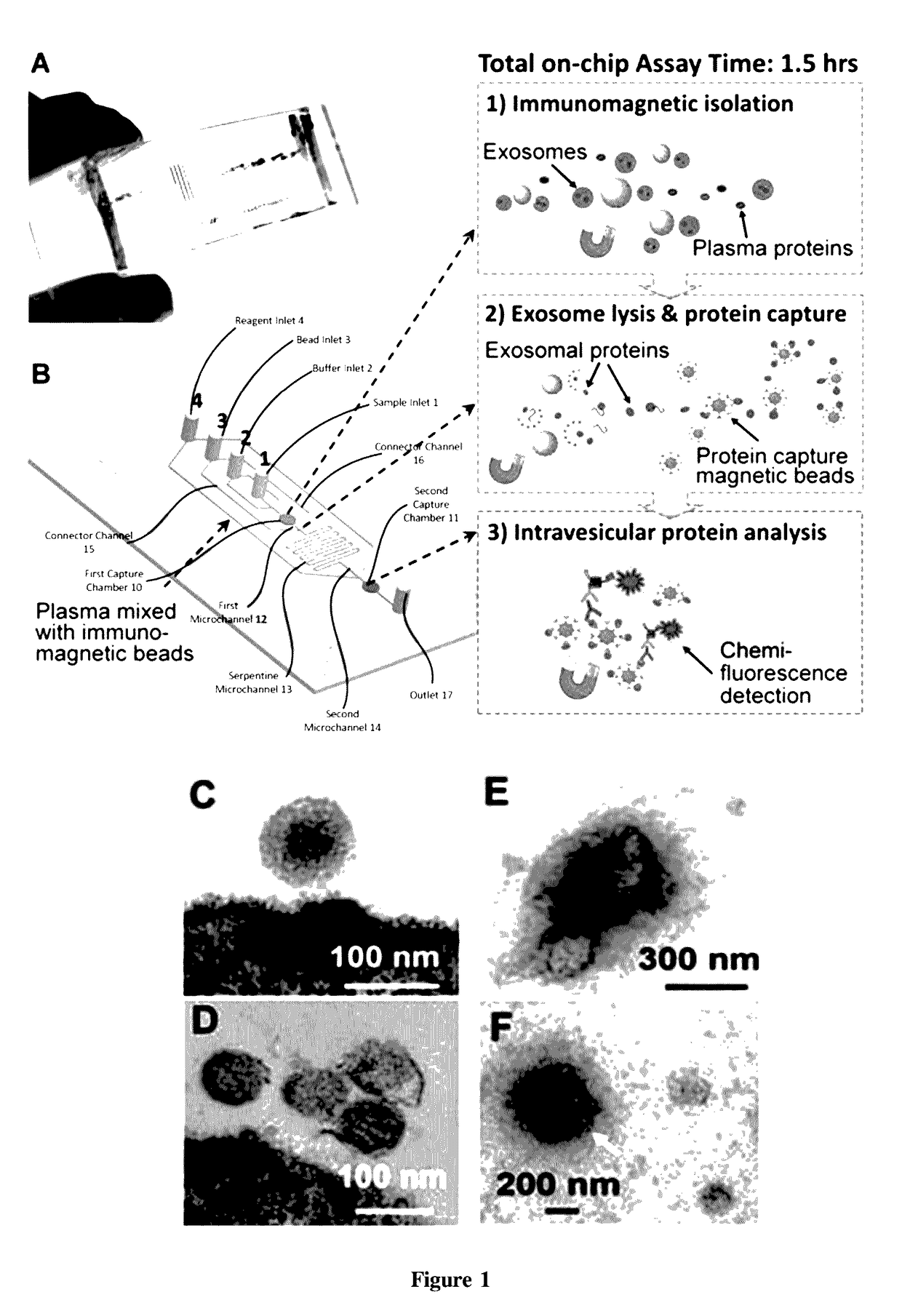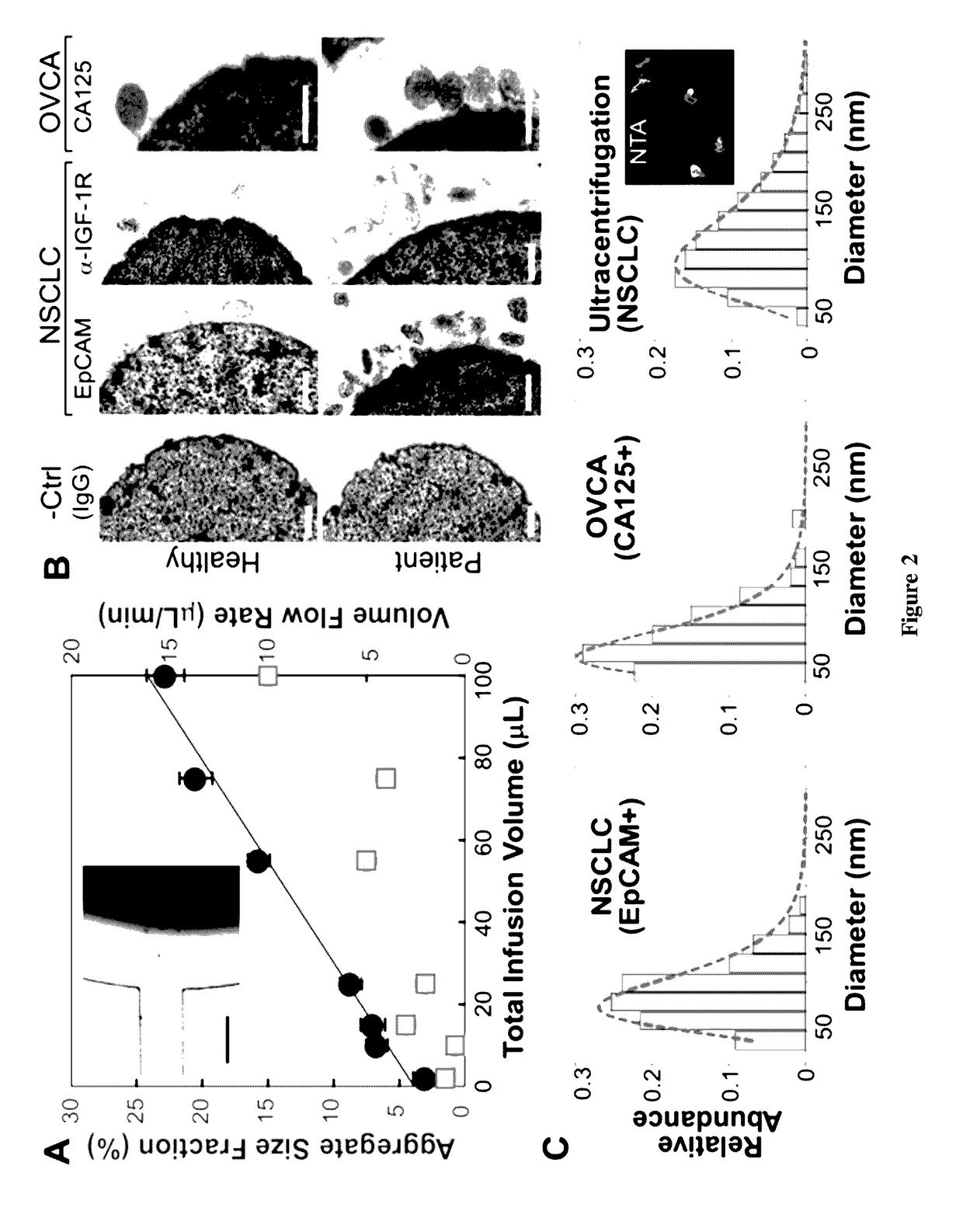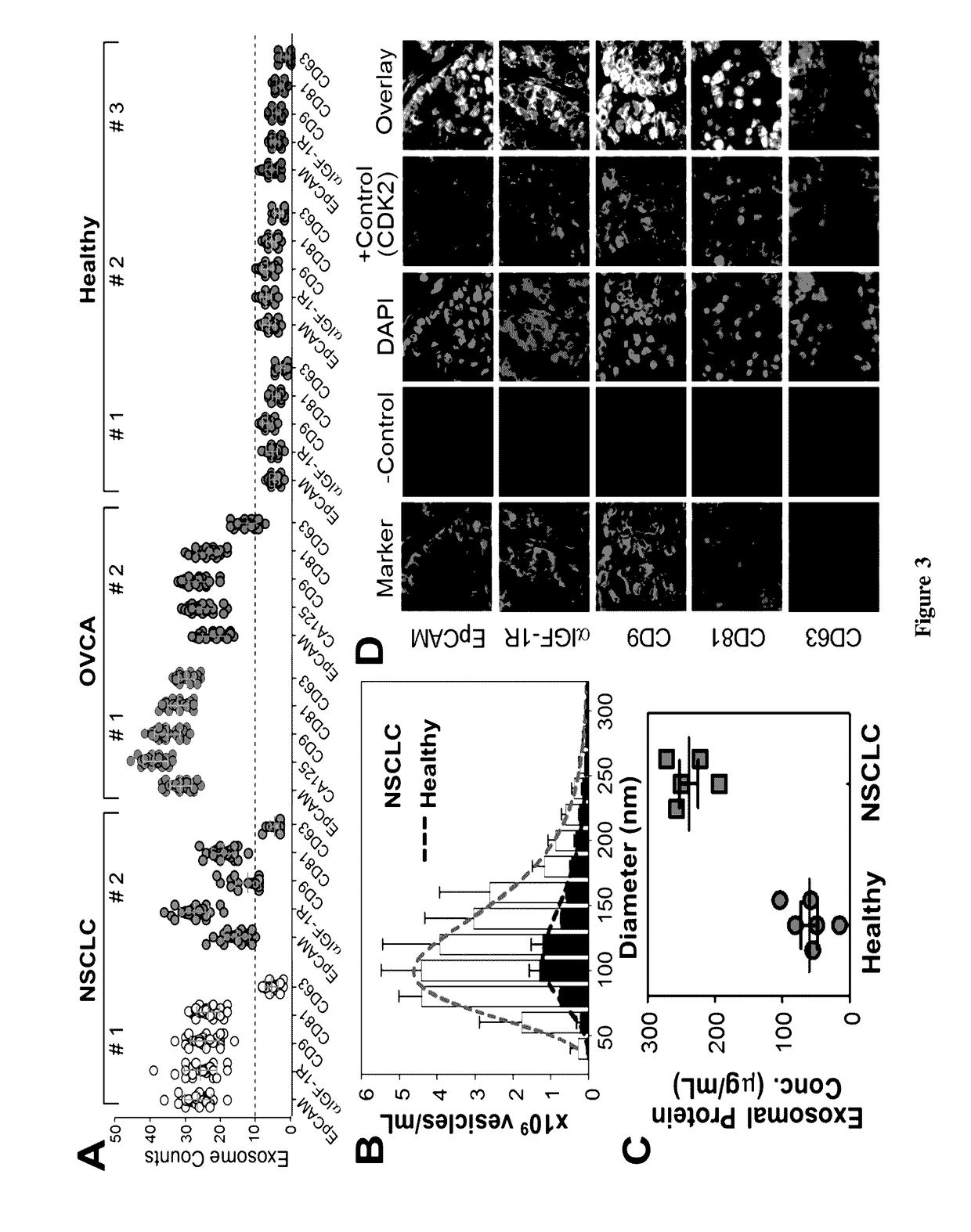Non-invasive monitoring cancer using integrated microfluidic profiling of circulating microvesicles
a technology of microfluidic profiling and cancer, applied in the field of non-invasive monitoring of cancer using integrated microfluidic profiling of circulating microvesicles, can solve the problems of pressure-caused damage of vesicles, inconvenient use, and severe constraints on exosome analysis, and achieve the effect of improving sensitivity and specificity
- Summary
- Abstract
- Description
- Claims
- Application Information
AI Technical Summary
Benefits of technology
Problems solved by technology
Method used
Image
Examples
example 1
[0060]This and the following Examples relate to integrated microfluidic microvesicle profiling using an illustrative device which contains a cascading microchannel circuit to integrate and streamline the multi-step profiling of exosomes directly from human plasma, including exosome isolation and enrichment (1st stage capture), exosome lysis, fluidic mixing and immunomagnetic capture of intravesicular targets (2nd stage capture), and protein assays (FIG. 1). A representative device architecture is detailed in FIG. 1A. The two cascading magnetic-bead capture chambers (first capture chamber 10 and second capture chamber 11) are of 4-mm diameter and are capable of capturing up to 109 2.8 μm microbeads each. A plasma sample pre-mixed with antibody labeled magnetic beads is introduced through sample inlet 1 into the first capture chamber 10 where the magnetic beads with bound exosomes are isolated from the sample and washed by PBS washing buffer (FIG. 1B). The lysis buffer is introduced t...
example 2
[0063]This Example provides a description of on-chip immunomagnetic isolation of circulating exosomes. We first investigated magnetic capture of beads as it dictates the overall performance of exosome isolation and analysis. The beads suspended in a buffer solution were retained by a magnet placed underneath the capture chamber (FIG. 2A, inset), forming an aggregate (FIG. 8) induced by the dipolar interactions between the beads. It was reported that the amount of magnetically captured beads in a microchannel can be represented by the size of the bead aggregate, which increases linearly with time at a constant flow rate. We adopted this approach to conveniently assess the bead capture a function of flow conditions (FIG. 2A). It was found that the aggregate size was linearly dependent on the total sample infusion volume regardless of the flow rates applied to reach certain infusion volumes (1-10 μL / min, FIG. 2A). The independence on flow rate indicates a high bead capture efficiency a...
example 3
[0066]This Example provides a description of profiling of exosome subpopulations by protein phenotype. Surface protein composition of exosomes plays an important role in exosome-mediated effects and may provide tumor fingerprints. To demonstrate the ability to detect exosomal expression patterns associated with cancer, we conducted relative quantification of five exosome subpopulations defined by individual surface markers using TEM. FIG. 3A exemplifies the results for two of the NSCLC samples that we have tested. Distinct subpopulation landscapes were observed, as compared to the healthy controls with a 3- to 5-fold increase in abundance for the surface markers except CD63. We further demonstrated the adaptability of our method for other cancers by testing on OVCA with the tumor markers (EpCAM and CA125) and exosomal markers (CD9, CD81, and CD63). The OVCA samples also provide a positive control for the NSCLC studies, as CD63 was found to be highly expressed in OVCA exosomes. High ...
PUM
 Login to View More
Login to View More Abstract
Description
Claims
Application Information
 Login to View More
Login to View More - R&D
- Intellectual Property
- Life Sciences
- Materials
- Tech Scout
- Unparalleled Data Quality
- Higher Quality Content
- 60% Fewer Hallucinations
Browse by: Latest US Patents, China's latest patents, Technical Efficacy Thesaurus, Application Domain, Technology Topic, Popular Technical Reports.
© 2025 PatSnap. All rights reserved.Legal|Privacy policy|Modern Slavery Act Transparency Statement|Sitemap|About US| Contact US: help@patsnap.com



